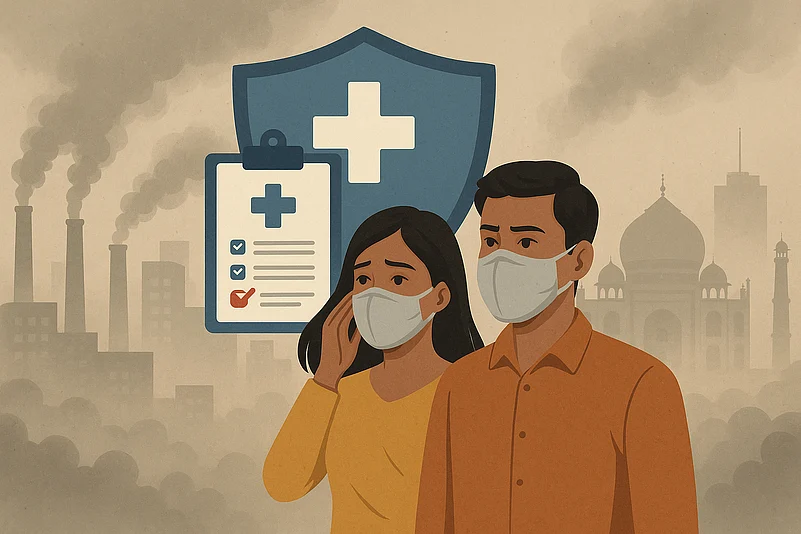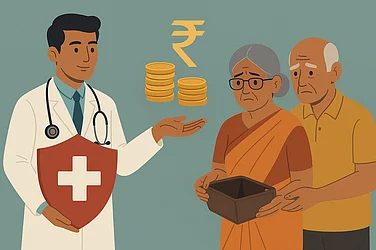
Summary of this article
Pollution-related hospitalisations in Delhi surged to nearly 17–18 per cent in 2024.
Respiratory treatments often cost Rs 35,000–80,000, straining urban finances.
Health insurance claims for asthma, COPD and infections are rising sharply.
Families now rely on higher coverage, super top-ups and cashless networks.
India’s worsening pollution crisis is no longer just an environmental issue; it is increasingly a financial one. Hospital admissions tied to poor air quality have risen sharply, and according to a recent report by Business Today, pollution-related respiratory hospitalisations in Delhi jumped from roughly five to six per cent at the start of 2024 to nearly 17–18 per cent by year-end. This spike has transformed health insurance from a safety-net into a frontline shield against the medical fallout of toxic air.
The Rising Medical Price Of Dirty Air
Every winter, major Indian metros slip into hazardous air-quality levels, and the impact is visible in hospital wards. Delhi alone reported more than 68,000 acute respiratory illness cases last year, with over 10,000 requiring hospital treatment. Even a short hospital stay triggered by pollution, such as for breathing difficulty, severe bronchitis, or asthma aggravation, can run between Rs 35,000 and Rs 80,000. Add inhalers, nebuliser support, and post-hospital reviews, and families may spend another Rs 6,000 to Rs 10,000 within weeks.
For households already burdened by soaring living expenses, these sudden health shocks can destabilise savings. Meanwhile, metro-city family floater health-insurance premiums, depending on coverage, range roughly between Rs 8,000 and Rs 32,000 annually. That makes a single pollution-related hospitalisation equivalent to two to four years of premium outgo, an equation that is pushing more urban families to reassess their coverage levels.
Doctors in major cities are also reporting a surge in pollution-linked paediatric cases. Children under ten are especially vulnerable, often requiring repeated outpatient visits or short hospital stays during peak smog months. The cumulative cost of these episodes—consultations, diagnostic tests, steroid nebulisers and preventive medications—can be substantial, especially for families without comprehensive health cover.
Why Insurance Is Becoming The New Mask
Since individual control over air quality is limited, financial protection is turning into the next line of defence. Insurers across the country are observing a steady rise in claims for asthma, chronic obstructive pulmonary disease (COPD), respiratory infections, and pollution-triggered cardiac complications. As these conditions become recurrent, the need for stronger, broader coverage is becoming apparent.
Urban consumers are now advised to review whether their health plans explicitly cover respiratory ailments, outpatient treatment, and essential consumables like inhalers. For families with young children or ageing parents, a floater plan often proves more cost-efficient. Many are also opting for super top-ups, which can increase coverage by Rs 10–15 lakh at a relatively modest additional cost—crucial when hospital bills can escalate rapidly during severe pollution periods.
Another shift is the emphasis on insurers with strong cashless networks in high-pollution cities. During respiratory emergencies, delays caused by paperwork can worsen anxiety and health outcomes, making cashless access vital.
Ultimately, polluted air may be unavoidable, but financial vulnerability doesn’t have to be. In today’s urban India, a robust health-insurance plan is becoming as essential as the mask you wear and the air purifier you run, an indispensable layer of protection in a world where the air itself has turned hostile.













